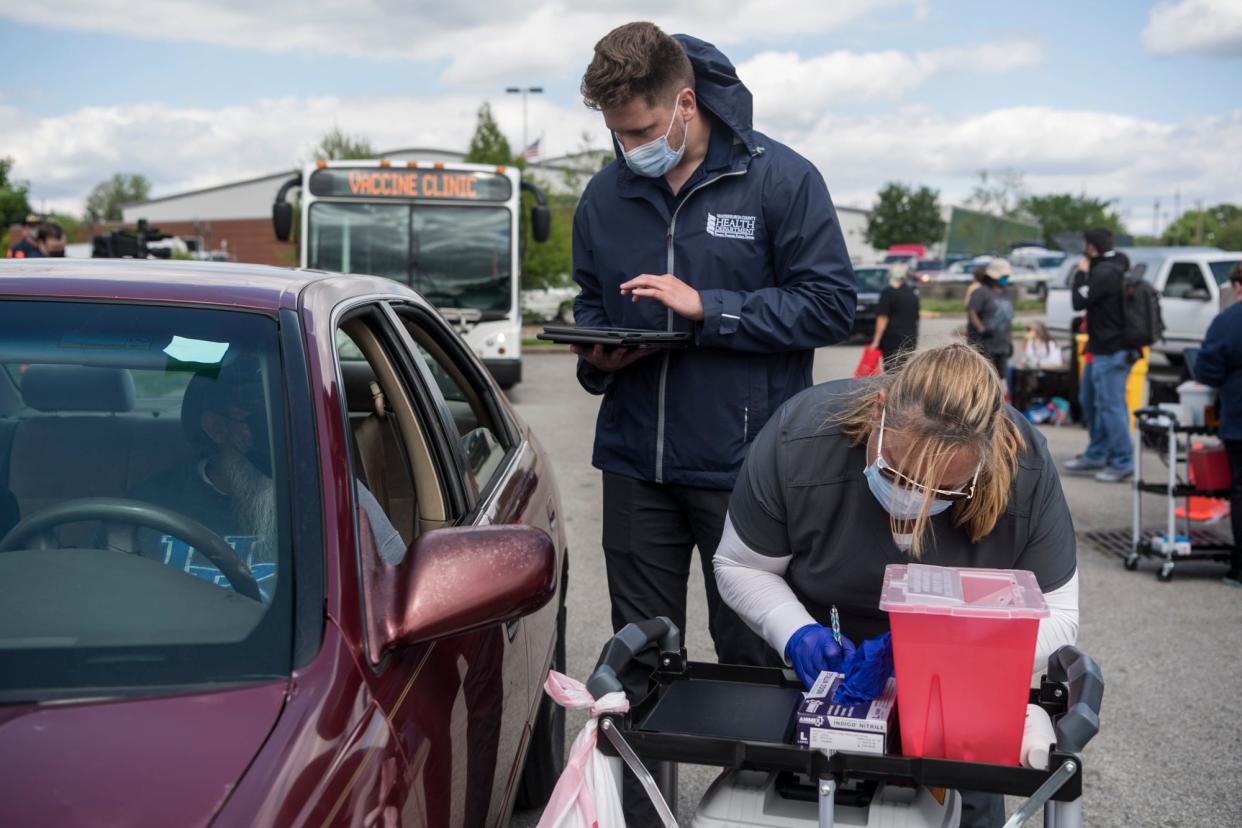COVID-19 cases are falling in the Evansville area. Winter could change that.

EVANSVILLE, Ind. — It's a fine line that area public health experts are walking, the line between wild optimism at recent COVID-19 data and cold caution that winter is looming.
On the one hand, coronavirus infections were down 84% in Vanderburgh County over the last week compared to the final week of August, the peak of the delta variant-fueled surge. On Thursday, the Evansville Vanderburgh Building Authority cited the county's transition to a lower level on Indiana's COVID-19 severity map as justification for lifting mask mandates imposed in August.
But no one knows whether the decline in cases will hold into the fall, let alone this winter.
Dr. Payal Patel-Dovlatabadi, an associate professor of public health at the University of Evansville, cited vaccinations and the natural immunity of people recovered from COVID-19 as reasons to think case numbers will be lower than they were at this time last year.
More: Warrick schools to drop mask mandate. Another SW Indiana district already has.
But Patel-Dovlatabadi said lower case numbers do not foretell the end of COVID-19.
"It is important to remember that COVID-19 will never really go away," she said. "The virus will become endemic and stay with us. Therefore, prevention is key, and this includes vaccinations along with a healthy diet and lifestyle."
Winter is the immediate problem, Patel-Dovlatabadi said, because that's when viruses thrive.
Last winter, Vanderburgh County rang up more than 1,000 new COVID-19 cases every week from mid-November through mid-January. It's intuitive that this winter will drive social gatherings indoors, where infections can spread more easily.
But then, vaccination against COVID-19 didn't begin in Vanderburgh County until Dec. 16. More than 94,000 county residents have been vaccinated since then.
Cases are not down in Henderson
Are cases really down right now? It depends whom you ask, and when you ask. Across the river in Kentucky, Henderson County reported 66 cases last week. A week earlier, it had reported 50 cases. It may be a relative small sample size, but it's a 32% increase.
Vanderburgh County's lower case numbers have held for the past two weeks, but it can't be called a steady pattern yet.
Vanderburgh posted 209 new coronavirus cases the week of Oct. 25-31, the lowest number since late July. That's down from 247 the previous week. But the week before that, the county reported a number nearly twice as high.
Most analysts believe the final approval this week of the lower-dose Pfizer-BioNTech COVID-19 vaccine for children ages 5 to 11 will produce a spike in vaccinations — but that likely will not affect the overall trajectory of cases.
More: COVID vaccinations for kids 5-11 could start this week. What Hoosier parents should know.
"Even if 30% of kids aged 5-11 are vaccinated, that would raise the proportion of the Indiana population vaccinated by only 3 percentage points, from about 51% to 54%," said Dr. Micah Pollak, one of the state's leading COVID-19 researchers.
"While every vaccinated person makes a difference, with so many unvaccinated still out there, it's unlikely the newly expanded eligibility will alter current case trends much."
U.S. Census Sex by Age data does not break out children ages 5-11, but it does put the number of kids ages 5-9 in Vanderburgh County at slightly more than 10,000. That's about 6% of the county's population.
More: 'This is tricky': Kids' COVID vaccine coming soon, but questions linger in Evansville area
Kentucky health official warily watches Europe
As of Monday, the U.S. has recorded 45.9 million confirmed COVID-19 cases and more than 745,000 deaths, according to Johns Hopkins University data. Global totals: Worldwide, more than 246.8 million cases and 5 million deaths have been counted.
More than 192 million Americans are fully vaccinated, according to the CDC — 58% of the population.
Clay Horton, director of the Green River District Health Department in Kentucky, has his eye on Europe, where COVID-19 cases have been surging for about three weeks. The continent is the only area among the World Health Organization’s six regions of member states where cases are rising.
"Historically the United States has trailed Europe six to eight weeks later," said Horton, who has worked in his agency's epidemiology department. "I’m curious to see what happens there. I don’t know that we’ll necessarily follow that trend this time."
Patel-Dovlatabadi, who also monitors global COVID-19 trends, looks ahead only a little at a time.
"Targeting the pandemic is a comprehensive approach. I do think that we have overcome the delta variant, and hopefully it will be a calm rest of the year," she said.
Horton is all too aware the United States has seen sharp declines in the past, only to see cases rise again.
"We’re hopeful, but cautious as well," he said. "We don’t want people to get the impression that COVID-19 is over."
Thomas B. Langhorne can be reached by email at tom.langhorne@courierpress.com.
This article originally appeared on Evansville Courier & Press: Evansville area COVID numbers drop. Winter season could change that

